2024 is your year to streamline your marketing process so it’s efficient and enjoyable. Sharing quality content consistently is so valuable for establishing trust and growing your business. It’s something that we’ve repeatedly discussed on the blog and in the podcast.
Sometimes, however, it can feel that the toughest thing about content creation is organizing and managing the content. Nowadays there are so many different social media platforms, mediums, and aspects to sharing content. What works on Pinterest may need to be formatted a bit differently to share on Instagram. What works on Reels might be need to be slightly adjusted for YouTube.
In this article, we try to provide a list of tools that we’ve used or plan to use in 2024 that make our content marketing campaigns more efficient.
Here are our favorite content marketing tools that make the content-sharing process organized, efficient, and impactful.
1. Later App – Social Media Scheduling
Think of the Later App as your syllabus for social media. On this app, you can schedule your content across every social media channel–Instagram, Facebook, Pinterest, LinkedIn, Twitter, etc. Later keeps it organized, letting you duplicate and customize each post across channels.
Why are we sold on Later? Later is very visual–you can see all of your uploads displayed at once, draft captions as they would appear on the grid, drag and drop your content onto different calendar days, and see the recommended times for posting.
Key Features: Later enables you to preview your grid with the scheduled stories, upload both stories and on-the-grid posts, and view your analytics all in one place.
Other Apps We’ve Tried:
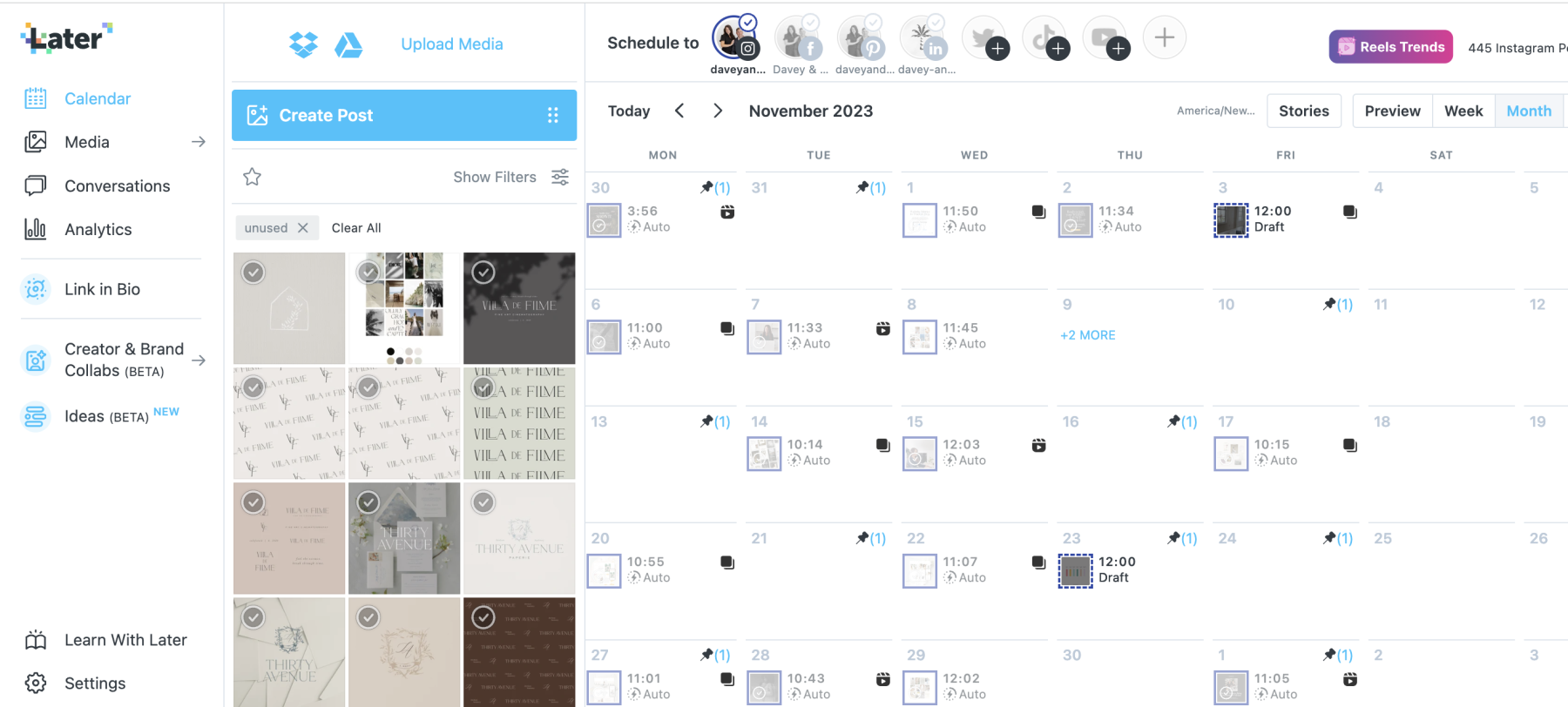
2. BDOW! – Lead Generation AND Social Sharing
BDOW! makes it easy to create forms and pop-ups for your website to capture leads. We’re in the process of moving our forms and pop-ups to BDOW! to get access to more advanced targeting and customization options.
Key features: BDOW! provides advanced targeting across many different form types such as exit intent forms and welcome mats. Additionally, we like that there’s an easy-to-view dashboard where you can view your leads, sort them by source type, and understand what forms are converting.
Other Apps We’ve Tried:
- ConvertBox – We no longer recommend this tool because the team behind does not appear to be making updates to the app.
- Built-in tools on Showit and Elementor.
3. Canva – Design for non-designers
We love Canva because the designers on our team can make templates for the non-designers of our team that are beautiful and easy-to-use. Canva also comes with a seemingly endless amount of templates, which makes it easy to get started even if you don’t have professional designers on your team.
Key features: Type in the search area the type of graphic you want, swap their text and images for yours, change the colors, and download in whatever size you need. It truly is that simple!
Canva allows you to effortlessly copy and resize multiple graphics at once, which often comes in handy! It is also a great source of inspiration for story, podcast, and reel content. While Canva is not our main graphic designing tool, it is one we always keep closeby!
Other Apps We’ve Tried or use:
- Sketch – An amazing tool, even if you don’t feel like you’re a professional designer, but can still feel overwhelming for a novice. This one deserves a blog post on its own.
- Adobe Creative Cloud – We use these tools, but similar to Sketch, these are professional-grade tools that can feel overwhelming if you’re not a professional designer.
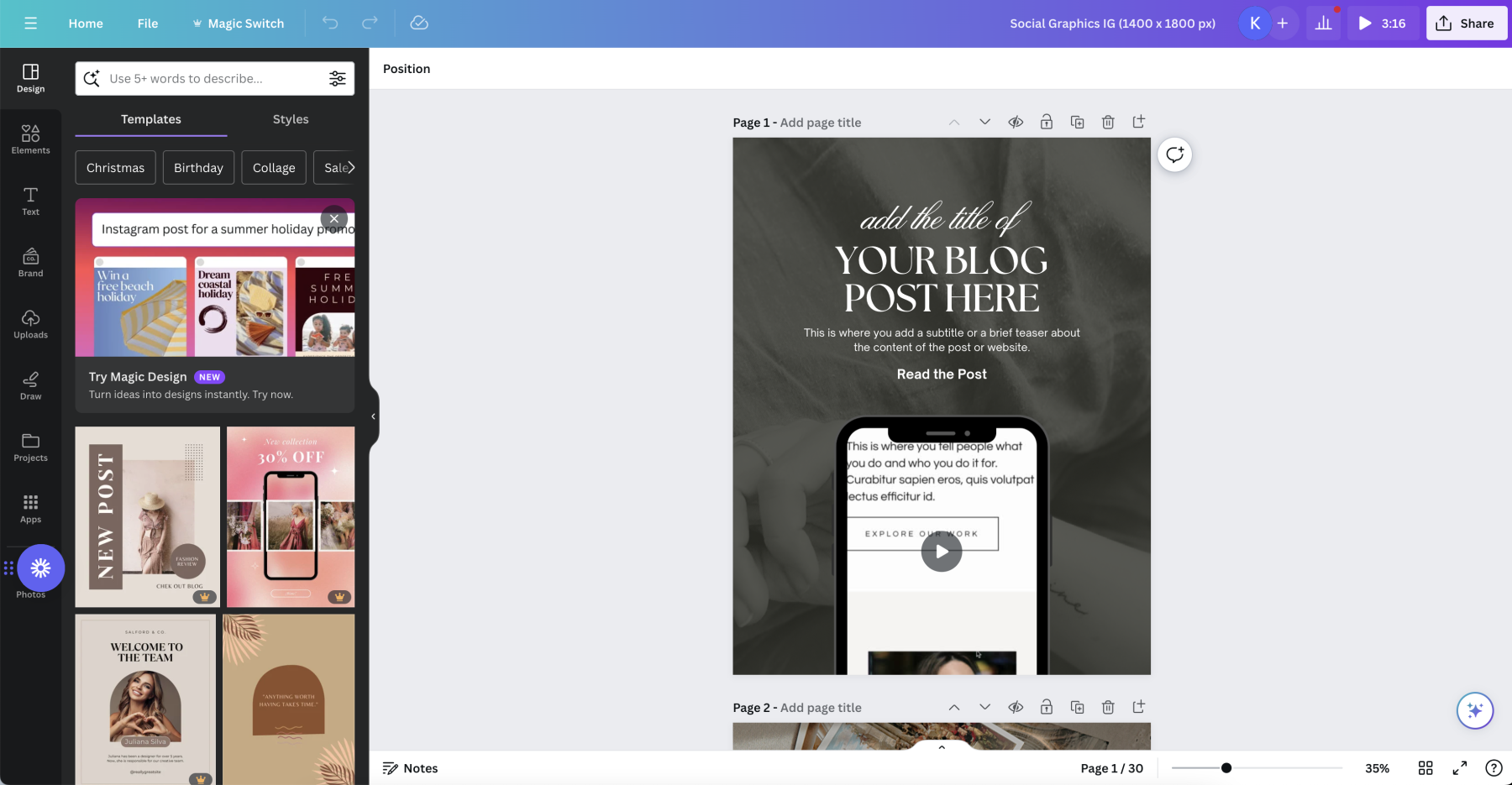
If you’re a Canva user, check our our free graphics —
4. Kit – Email Marketing Platform
Kit is an email marketing platform that we’ve used for years. It provides enough advanced functionality for our business to continue growing, but is not as overwhelming and feature bloated as many of the alternatives we’ve tried over the years. The only downside is the email editor doesn’t make it as easy to create visually stunning emails (if that’s important to you, check out Flodesk).
Key features: Building sequences and automations in Kit is very straightforward. We love Kit’s A/B Testing, which allows us to test two subject lines before sending emails to our entire email list.
Other Apps We’ve Tried:
- MailChimp – We know a lot of designers… none of them recommend MailChimp.
- Ontraport – If you have a sales team, a solution like Ontraport might make sense. We don’t, so it just ended up being too pricey for the small set of features we were actually using.
- Flodesk – Although we use Kit, we still recommend Flodesk to many of our clients. At this point, we’re in too deep with Kit to try anything else. Read our comparison of Flodesk and Kit.

5. TubeBuddy – YouTube Research and Analytics
TubeBuddy is an extension that provides research and analytics to help you optimize your YouTube channel. We primarily use the tool to help us generate ideas on YouTube, but the tool can do so much more than that from analyzing your competitors to rank tracking within YouTube.
YouTube is on our list of platforms to double-down on 2024.
Key features: The research aspects of this tool are amazing and worth the cost of the subscription. If you’re an advanced YouTube user, it can also automate most of your YouTube workflow.
TubeBuddy Alternatives: We haven’t tried any of these, but have heard good things about VidIQ. However, the people we trust for all-things-YouTube typically recommend TubeBuddy.
6. Tailwind – Pinterest Scheduling
Tailwind might be one of our teams favorite tools, even if we’re not quite as excited about Pinterest as we once were. Tailwind is an online scheduling tool for multiple platforms, but it’s most viable for Pinterest. We’ve repeatedly tried to consolidate the tools we use for social media sharing, but nothing comes close to Tailwind for Pinterest.
Key features: With a plug-in that allows you to pin images and graphics directly from a blogpost, uploading content to Pinterest is easy. It also keeps your content scheduled on a smart-loop, which ensures it stays evergreen on the Pinterest feed.
We use Tailwind on a weekly basis, uploading all of our blogpost content onto Pinterest in bulk batches. By grouping multiple Pinterest boards together under a board topic, we are able to speed up the scheduling process significantly.
Other Apps We’ve Tried:
- Hootsuite
- Sprout Social
- Later – We still use Later for Facebook, Instagram, and LinkedIn sharing.
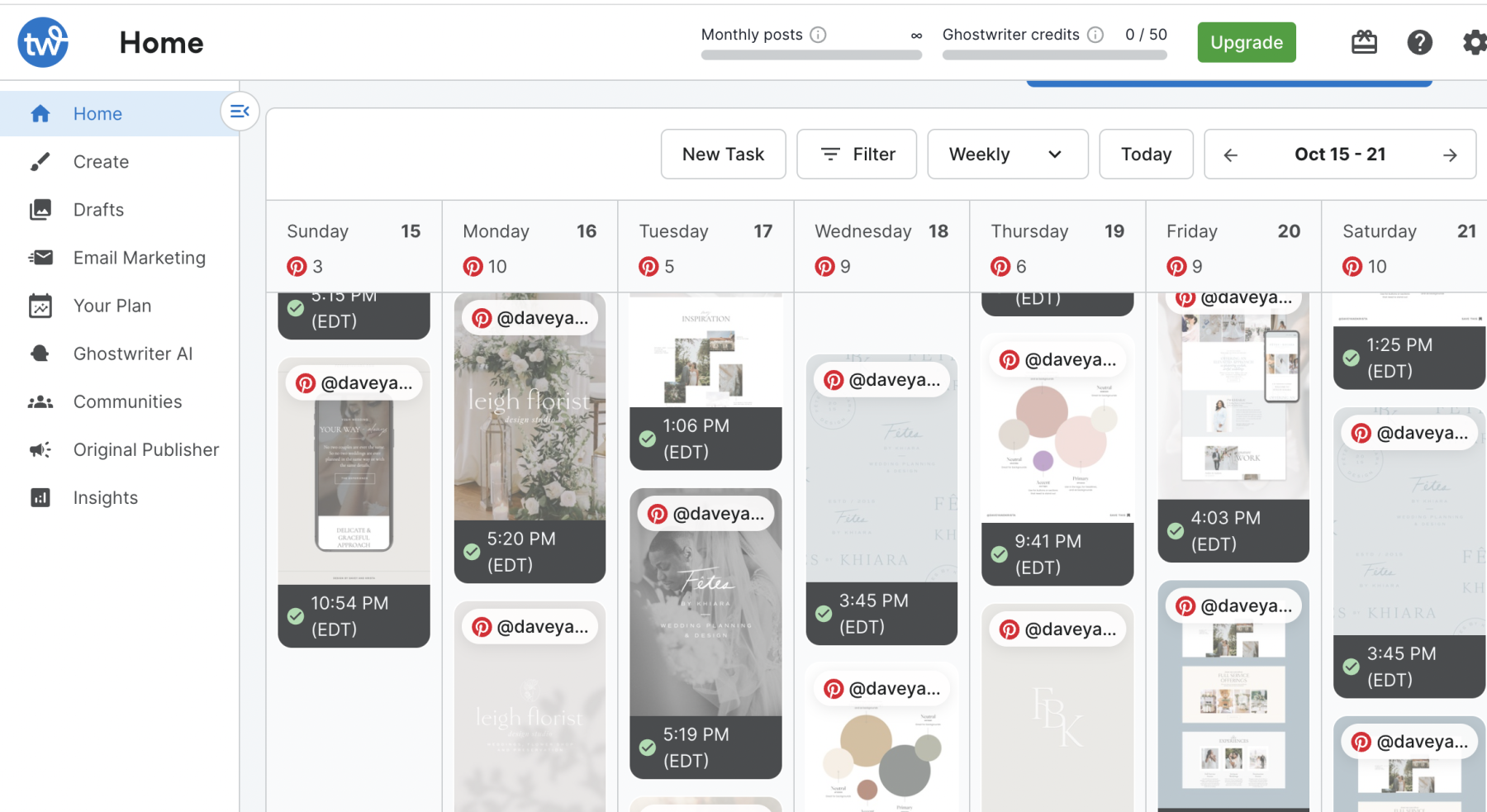
7. Google Analytics, Google Search Console, Google Search Console Insights
Google Search Console is one of my favorite tools for understanding how our content is performing in search and for coming up with new content ideas (something I share about in our SEO courses). It’s easier to set-up and use than Google Analytics, too.
Don’t get me wrong, Google Analytics is important and we do spend a decent amount of time in there looking at traffic trends and evaluating referral sources.
When you associate your Google Analytics account with your Google Search Console account, you also get access to a tool called Google Search Console Insights. Insights doesn’t provide quite as much data as GSC and GA, but it still provides an interesting at-a-glance look at your fastest growing pages and keywords.
Key features: Using Google Analytics & Google Search Console, you’ll be able to optimize your high-traffic pages, understand website traffic, track your conversion rate, and get important benchmarks for your sales.
Apps that make Google Analytics and Google Search Console easier (you don’t need all of these tools—they have overlapping feature sets):
8. AnswerThePublic – Topic Research
We brainstorm much of our content by starting with a simple question: What is our community asking about? AnswerThePublic is a simple tool that helps us answer that question. You can even get a few free daily searches.
We primarily use AnswerThePublic during the content brainstorming phase of our content creation process. AnswerThePublic organizes everything by search volume, comparisons, click volume, and more.
Key features: Type in a topic, choose your data category (Google, YouTube, or Bing), choose your location, and then enjoy as hundreds of results appear!
Other Apps We’ve Tried: Although we do use other SEO tools, we’re not aware of any apps that do exactly what AnswerThePublic does.

9. Ahrefs – Topic/SEO Research
Ahrefs is an all-in-one SEO research tool that we use for keyword research, rank tracking, backlink tracking and research, and competitive research. We’ve used a lot of SEO tools in the past and find that Ahrefs probably provides the backlink data. With that said, I don’t love their pricing structure. We’re considering a switch to Ubersuggest.
Key features: Ahrefs allows you to analyze your competitors, optimize your website, search keywords, and track your metrics.
Other Apps We’ve Tried:
- SEMrush – We’re big fans of SEMrush, but decided that the current Ahrefs plan we’re on is a better fit.
- Ubersuggest – This is typically what we recommend for those who care about SEO but don’t want to pay for agency tools. We’re considering a switch to Ubersuggest because it has come a long way since launch and is very affordable.
- Moz
10. Enji – Small Business Marketing Suite
Enji is a tool that seeks to make marketing manageable for small businesses. Since launching earlier this year, they have also rolled out an A.I. copywriting tool and are actively working on other tools like social media scheduling.
If you feel like marketing is overwhelming, Enji is a great place to start getting organized. It will help you get focused on what matters.
Key features: Enji provides marketing tools, AI copywriting, task management, and brand consistency tools.
Other Apps We’ve Tried:
11. ScoreApp – Online Quizzes
ScoreApp is a one stop shop for creating professional quizzes that generate leads. We’ve tried a bunch of different options and ScoreApp is by far the easiest to use and the most aesthetically pleasing option. If you’ve ever created an online quiz, you know that it can be a nightmare mapping. We found ScoreApp’s interface to be the most intuitive.
Want to see it in action? Check out our Website Assessment:
Key features: With a variety of question types, a category scoring system, and fully customizable appearance, ScoreApp provides an easy way to create online quizzes that fit your business needs.
Other Apps We’ve Tried:
- Interact – Not the most aesthetically pleasing option.
- Typeform – Not quite as easy to map out the quiz or set the score/results.
- ConvertBox – No longer recommend.
12. RankMath – Optimizing Posts
RankMath is a powerful SEO plugin for WordPress. We love that RankMath is both feature-rich and affordable. We primarily use RankMath’s optimization tool to ensure our pages and posts are optimized; however, the tool can also be used to create redirects and set-up your associated Google accounts.
Key features: Use RankMath to verify with Google Search Console, set-up Google Analytics, and optimize your pages and posts.
Other Apps We’ve Tried: Check out this SEO plugin comparison we recorded a little while back.
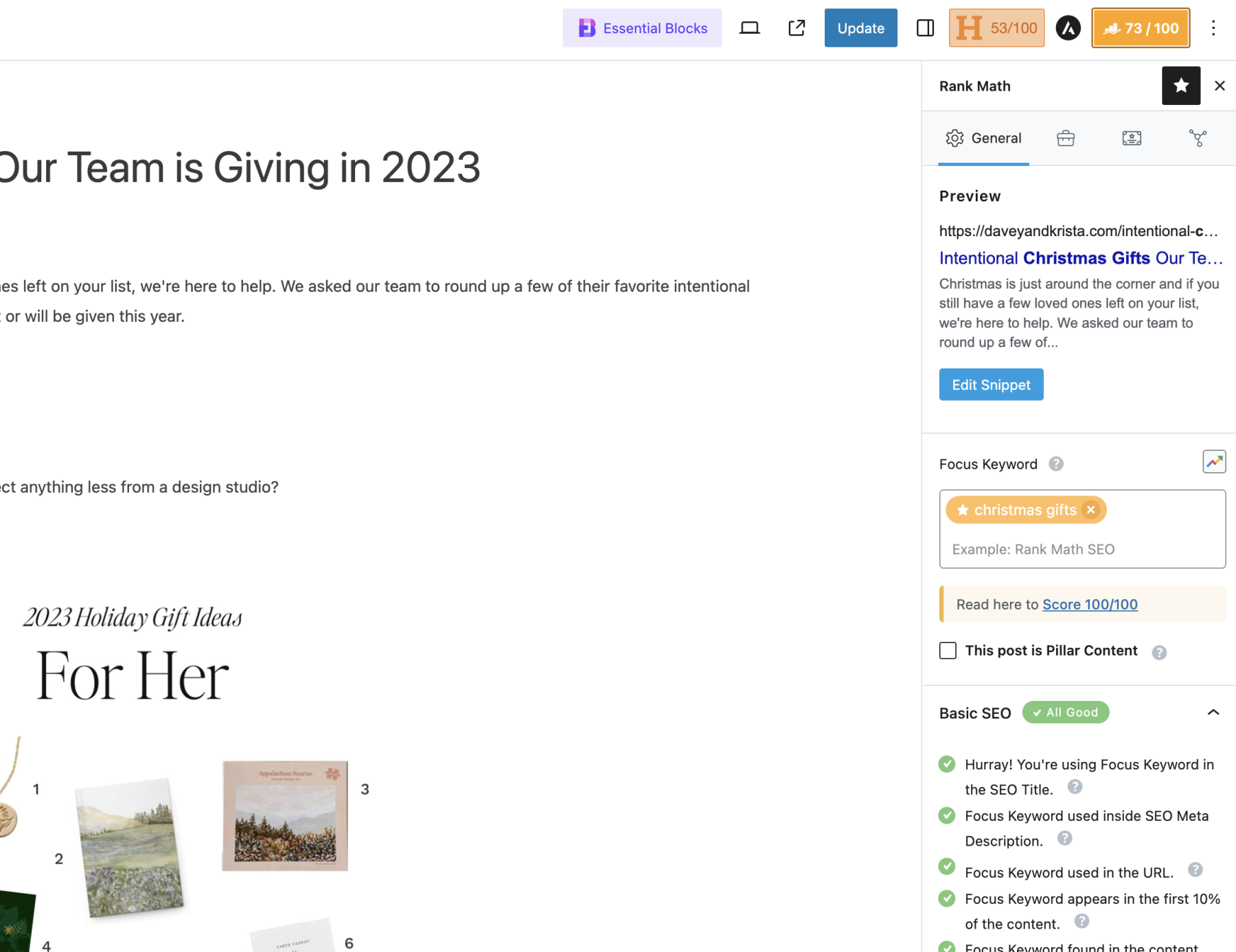
13. Reddit – Content Research
Reddit is a watering hole for people to provide feedback on events, products, and services from across the web. As such, it can be a valuable tool for businesses too. Wondering what feedback people have about competitor’s products? Check Reddit. Want a detailed comparison of different products from an actual user? Check Reddit. Want to know what people think about X, Y, Z happening in the world? Check Reddit.
Reddit threads also rank for an absurd amount of searches. Businesses would do well to manage their reputations there.
Key features: Reddit provides authentic conversation, feedback, and ranking. Post a point of view, educational blog post, or interesting topic, and then enjoy as the unfiltered feedback flows in. Or just use it as a research tool!
Other Alternatives We’ve Tried:
14. Zencastr – Podcast Management
We recently switched from Fireside.fm to Zencastr since Zencastr is more of an all-in-one tool. One feature that we particularly like about Zencastr is the ability to conduct and record video interviews. We’ve found Zencastr extremely reliable for our podcast recordings.
If you don’t own professional recording hardware, Zencastr’s tools can help you make up for that (although, good hardware is worth it!).
Key features: Zencastr allows you to record, publish, monetize, and manage your podcast from one app.
Other Apps We’ve Tried:
15. Venngage – Design for non-designers
Venngage helps you take infographic templates to the next level–think of this app as the Canva for charts and graphs. Anytime we need inspiration for a chart or infographic, Venngage is our starting point.
Key features: Choosing from thousands of templates to create your models, pie charts, do’s and don’ts lists, etc. Makes infographic design easy and enjoyable..
Other Apps We’ve Tried:
16. Loom – Record and share videos
Loom is a messaging tool that allows you to record and share videos. It is probably the most-used tool in our business—not only for team feedback and interaction, but for client feedback as well.
Key features: Loom is particularly helpful for team collaboration. We’ve cut down on the amount of meetings and emails we need to send by using Loom.
We often use Loom for team feedback on projects. As many of our team members are remote, Loom allows us to explain changes or edits in a visual and auditory way without having to schedule an online meeting.
Other Apps We’ve Tried: There’s nothing quite like Loom in our opinion.
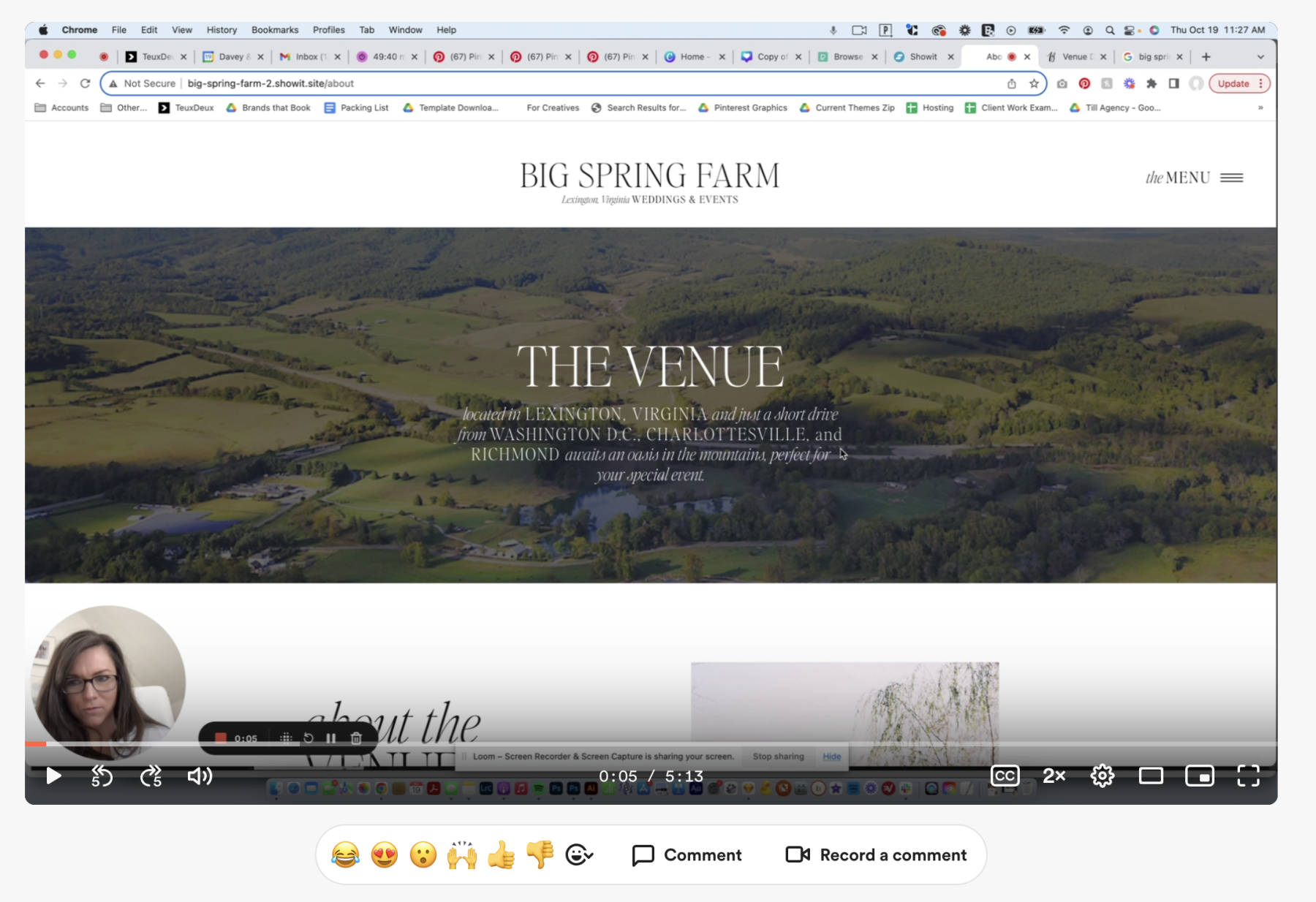
17. Showit – Funnel Building
In our opinion, Showit is the very best standalone page building tool available. If you currently use Leadpages, Instapage, or Clickfunnels to build your sales pages, you should give Showit a try. Not only is it more flexible and easier to use, but its more affordable than any of those options.
Key features: The best drag-and-drop page building tools.
Other Apps We’ve Tried:
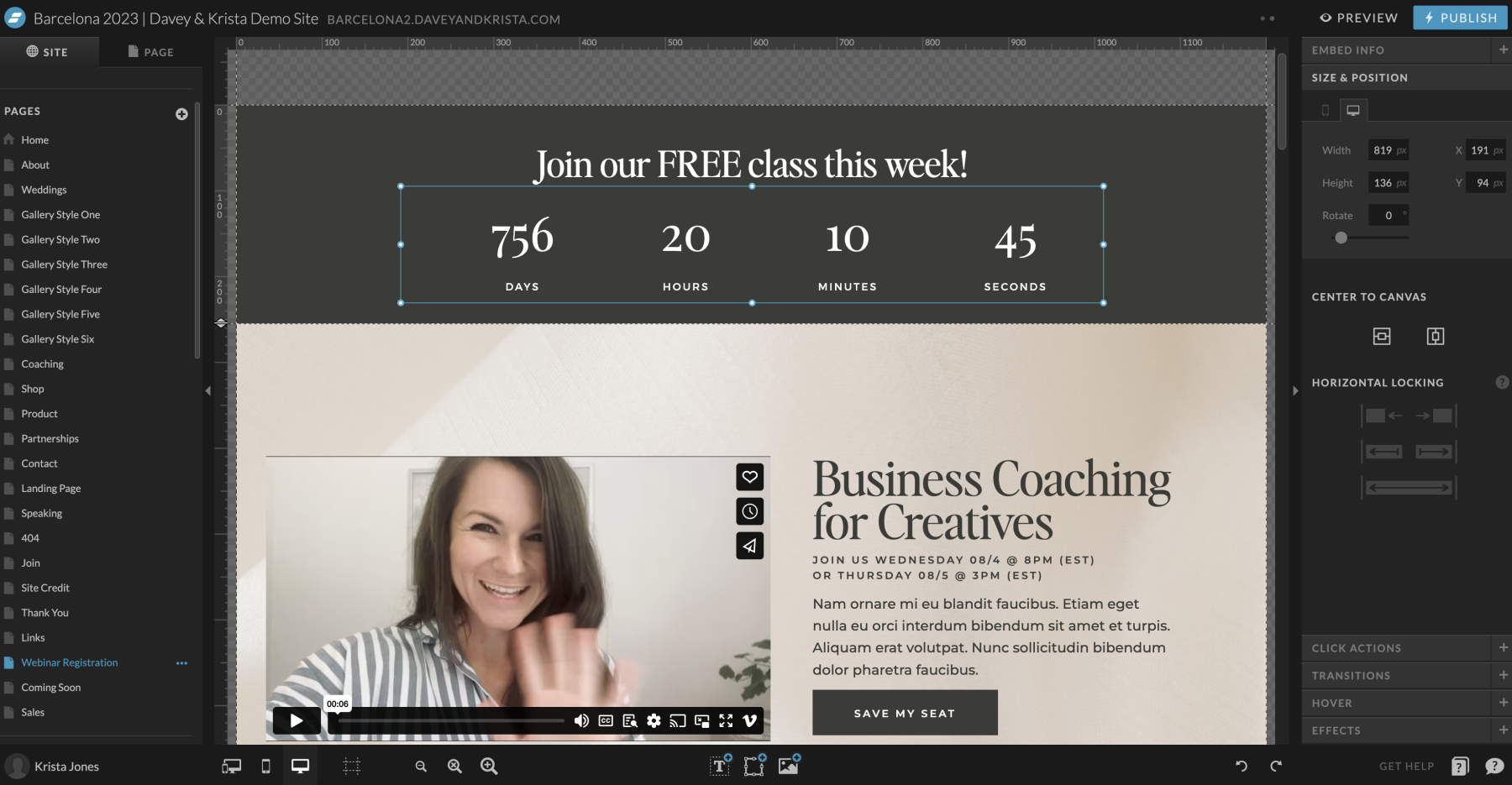
18. ChatGPT – content research
ChatGPT is an AI chatbot tool that can help with—well, anything! There are so many different ways to use ChatGPT, but we primarily use it in our content workflow. ChatGPT helps us generate content ideas and optimize our posts.
We don’t use it to write our posts.
Key features: One of the best features of ChatGPT is its ability to sort through vast amounts of research and pull content relevant to your particular questions.
Other Apps We’ve Tried:
19. ClickUp – Team Organization
We use ClickUp to plan and organize all of our content. Actually, our entire team uses it to organize the various tasks we have across our teams. ClickUp helps us stay organized so we know what is due, when it is due, and who needs to complete the associated tasks.
Key features: ClickUp is super flexible so it can be customized specifically for your content marketing workflow. You can also add people from outside your organization.
We use ClickUp every single day across our marketing team. We love how easily we can keep track of blog posts, social media content, podcast topics, etc. Our favorite feature? The ability to tag someone and notify them on any project—it makes communication clear and direct.
Other Apps We’ve Tried:
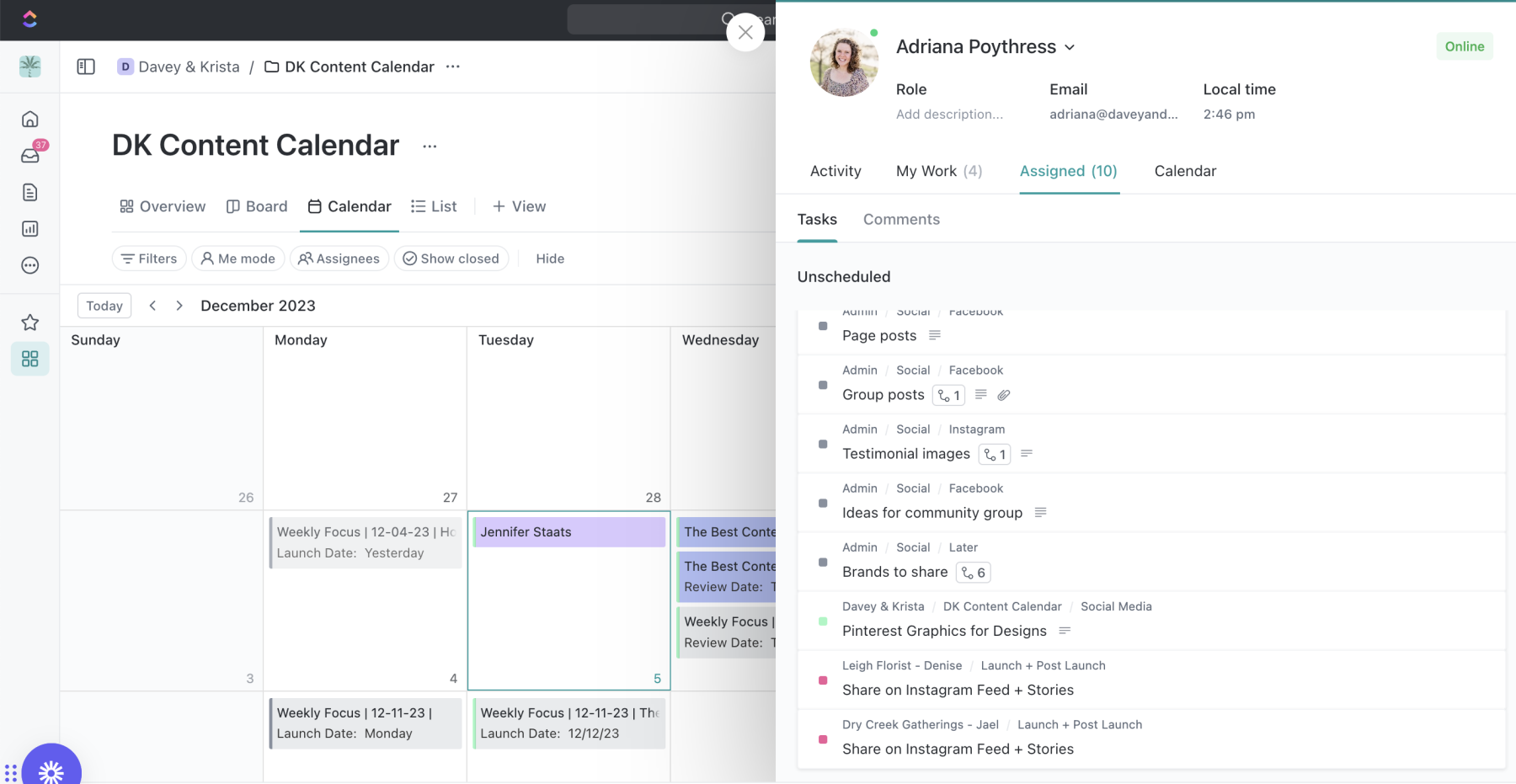
As you’re looking at the year ahead, choose a few of these marketing tools to try. Streamlining even one element in your content workflow can make a huge difference.
Do not worry about implementing these tools all at once. The important part is finding a process that allows you to be consistent and produce quality material on your platforms. One step at a time, in the right direction, will get your marketing strategy exactly where it needs to be.
Do you have any questions or thoughts about any of the marketing tools we listed above? Comment below, we’d love to hear your input.
VIEW THE COMMENTS
Add A Comment